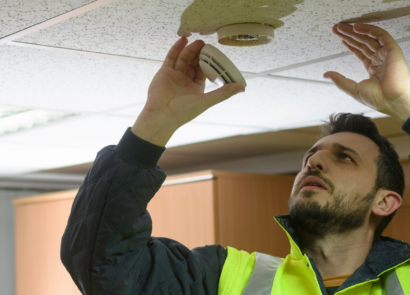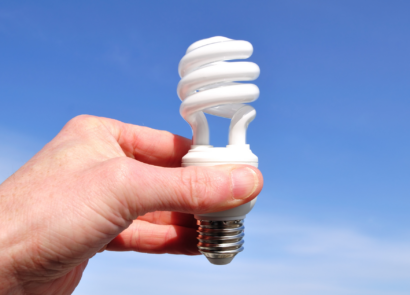Bright Ideas
The history of light bulbs in Canada is a fascinating story: one that spans centuries. Marked by innovation, scientific breakthroughs, and the relentless pursuit of brighter, more efficient illumination, the evolution and history of the light bulb is truly remarkable– especially in Canada. From the early days of incandescent bulbs to the modern era of energy-efficient LEDs, the evolution of lighting technology in Canada reflects both global advancements and unique national contributions.
Though Thomas Edison is credited with the official invention of the light bulb in the late 19th century, the journey of the light bulb in Canada is a story for the ages—one marked with ingenuity, entrepreneurship, and technological advancement.
The Incandescent Dawn
The story begins in the late 1800s, when the incandescent light bulb, a revolutionary invention, started to make its mark in Canada. At this time, Canada was experiencing rapid urbanization and industrialization, which meant the need for reliable and efficient lighting was growing—very quickly. In lieu of electricity, gas lamps and candles were used. While traditional, however, they were limited in their reach and practicality (not to mention the fire hazards)!
In 1879, Thomas Edison patented the first practical incandescent bulb, forever changing the way Canadians lit their homes and cities. By the early 1880s, the technology had reached Canada, with major cities like Toronto and Montreal adopting electric lighting systems. (Thomas Edison and his friend/colleague, Edward Johnson, also invented the very first strand of electric/Christmas lights at this time!)
Canadian Innovations
However, there is also more to the story. In 1874, a patent was filed in Canada by Torontonians Matthew Evans and Henry Woodward. Canada’s Patent #3738 was then filed as a way to further improve electric light—by using carbon as the filament. Once the patent was filed, they tried to secure financing for their new invention, but were told time and time again that their idea was simply too risky. It’s no coincidence that Thomas Edison’s light bulb also used carbon filament—the prolific figure bought Woodward and Evan’s patent rights in both Canada and the United States, and patented his incandescent light bulb in 1879.
The establishment of the Toronto Electric Light Company also occurred in 1883, which helped to spearhead electric light into the homes and streets of Toronto residents. The adoption of electric lighting spread to other major Canadian cities like Montreal, Ottawa, Vancouver, and Halifax quickly thereafter.
The Fluorescent Era
In the mid-20th century, fluorescent lighting emerged as a more energy-efficient alternative to incandescent bulbs. This shift was driven by the need for improved energy conservation and reduced environmental impact. Canadians began adopting fluorescent lighting in various settings, from homes to businesses, further shaping the nation’s lighting landscape.
As the 20th century progressed, Canada progressed with further advancements to lighting technology driven by research, development, and collaboration between academia, industry, and government. Research institutions such as the National Research Council of Canada (NRC) played a crucial role in supporting innovation and fostering partnerships with private sector companies to enhance the efficiency, safety, and sustainability of lighting.
Compact Fluorescent Lamps (CFLs)
The 1970s saw the rise of compact fluorescent lamps (CFLs) as a more compact and energy-efficient lighting option. This was a notable milestone in Canadian lighting history, as CFLs had longer lifespans, reduced electricity consumption, and were energy efficient. Coupled together, these factors aligned with growing concerns about energy conservation and environmental sustainability.
Like the old-style fluorescent lights, they use an alternative method to produce light, making them energy efficient.
LED Revolution
The early 21st century ushered in the era of light-emitting diode (LED) technology, representing a significant leap forward in energy efficiency and durability. Canadian researchers and companies contributed to the development and advancement of LED technology, resulting in a highly efficient and versatile lighting solution for a variety of applications—everything from residential, to commercial, to outdoor lighting. LED bulbs quickly gained prominence in Canada, and their widespread adoption across the country was driven by many factors, including increased consumer demand for eco-friendly products, improved performance and affordability, lower energy consumption, longer lifespan, and reduced maintenance costs.
Smart Lighting
In addition to the technological advancements made to physical light bulbs, the concept of smart lighting has emerged to seamlessly integrate technology, which we use so prominently in our day to day lives, with our homes. Smart lighting systems allow for greater control and customization, allowing users to adjust brightness levels, colour palettes, and even implement lighting schedules. These lights can be controlled through corresponding smartphone apps, or even by voice commands. These innovations surely make our lives easier, enhancing convenience and accessibility, whilst also contributing to energy savings and environmental sustainability.
Looking Ahead
As we look back at the history of light bulbs in Canada, it becomes evident that lighting technology has played a crucial role in shaping our nation’s progress. The light bulb’s journey has also been a clear testament to the power of innovation, collaboration, and perseverance in shaping our world today. From the early days of Edison’s incandescent bulb to the modern era of LED illumination, Canada has embraced innovation to light up its cities and homes efficiently. As we celebrate the achievements of those in our nation’s past, embrace emerging technologies, and foster a culture of innovation, we can (literally) illuminate a brighter, more sustainable future for generations to come.
And remember– if you have burnt out light bulbs or tubes in your possession that are ready to be recycled into new life, visit our recycling locator tool to find a drop-off location near you.





